Can New Energy Vehicle Batteries Last 20 Years? Has the Last Fortress of Fuel Vehicles Been Breached?
![]() 06/30 2025
06/30 2025
![]() 736
736
New energy vehicles (NEVs) are actually quite durable.
Is the notion that NEV batteries are not long-lasting a misconception?
When contemplating whether to purchase a NEV or a fuel vehicle, some individuals are concerned that NEVs, particularly pure electric vehicles (EVs), will experience a significant reduction in range due to battery capacity degradation after accumulating a certain mileage. Replacing the battery is often perceived as equivalent to buying a new car.
Indeed, batteries face two primary issues: cycle life and calendar life. Cycle life refers to the decrease in maximum battery capacity with an increase in charging cycles, while calendar life pertains to the gradual decrease in maximum capacity due to material aging, even when the battery is not in use. However, a recent UK research report from Geotab reassures us that fears of battery life degradation are largely unfounded.
According to US automotive media Motor1, a study by UK telematics company Geotab, based on a sample of over 10,000 EVs, reveals that the average annual degradation of EV batteries is approximately 1.8%. Assuming no major accidents, the maximum battery capacity after 20 years would still be equivalent to 64% of a new vehicle's capacity. While this represents a notable reduction in range, it is still sufficient for daily use, surpassing the average lifespan of American cars by six years.
However, a report released by CATARC in November 2024 shows that the battery health of a 2019 Model 3 was still 89.3% after driving 116,000 kilometers, while the 2020 Li Xiang ONE's battery health was only 75.6% after driving 103,000 kilometers. Considering the time frame, the annual battery degradation of the 2019 Model 3 was slightly over 2%. These two reports appear contradictory; which one is more credible?
If battery life exceeds that of the vehicle, can we confidently purchase pure electric vehicles?
Consumers' perceptions of battery degradation in NEVs may stem from experiences with common electronic devices such as mobile phones and tablets. Heavy mobile phone users may need to charge their devices two to three times a day, amounting to hundreds to thousands of charging cycles per year. It is normal for the maximum battery capacity to degrade by about 10% annually under such conditions.
Cars are different. Based on the warranty limit of 30,000 kilometers per year commonly provided by automakers, the average daily driving distance is less than 100 kilometers. A car with a range of 500 kilometers would require approximately 60 to 80 charging cycles per year, significantly fewer than digital products. If we calculate based on the average annual driving distance of 12,000 kilometers for private cars in China, as provided by the China Automobile Dealers Association, the number of charging cycles per year is only about 30.
In CATARC's tests, the Li Xiang ONE exhibited more severe degradation than the Model Y, partly due to the smaller battery size in extended-range electric vehicles. NEVs with smaller battery capacities need to be charged more frequently, which can more easily lead to battery life degradation. This also underscores the advantage of NEVs equipped with large-capacity batteries, which not only offer longer range but also effectively improve battery life.
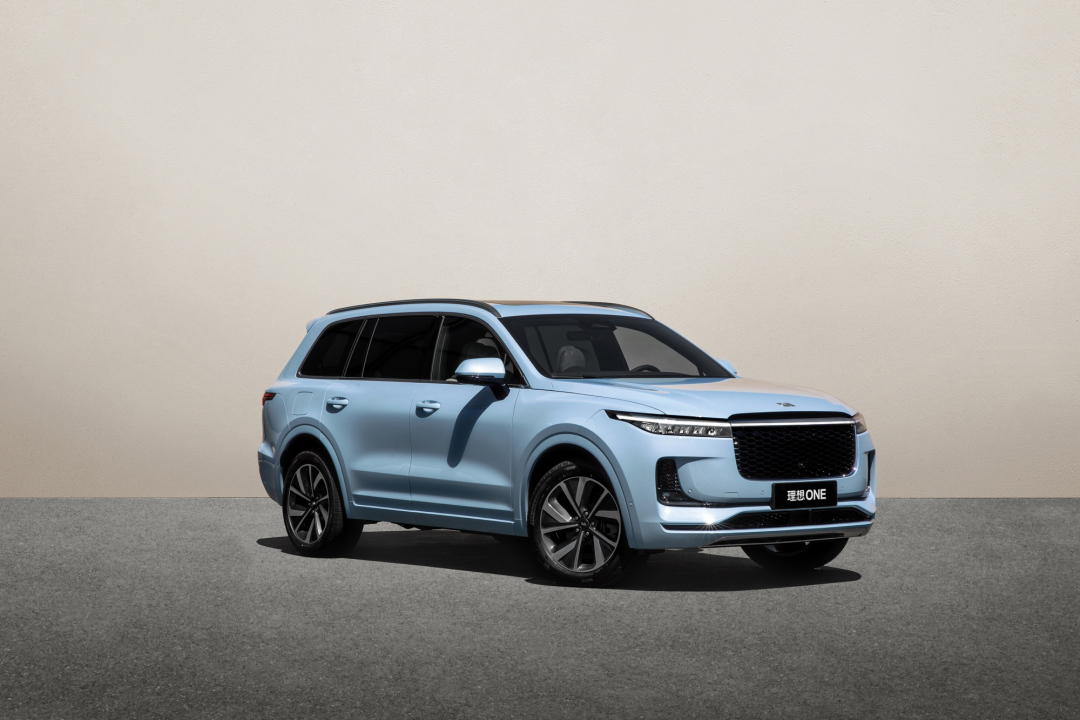
(Image source: Li Xiang Auto)
Regarding which report—Geotab's or CATARC's—is more credible, Diantong favors Geotab. The reason is that CATARC's report is based on the actual test results of a small number of products, which may be incidental. Geotab, on the other hand, surveyed over 10,000 samples, and the large sample size can mitigate the impact of individual differences on the results.
Automakers and battery companies are well aware of the importance of battery life, and technological upgrades have consistently focused on areas that consumers perceive deeply, such as cycle life, fast charging power, and energy density. For instance, the official page of Contemporary Amperex Technology Co. Limited (CATL), a leading global battery company, indicates that battery life can reach up to 16 years or 2 million kilometers. It is crucial to note that battery life refers to the number of charge-discharge cycles within the design life where capacity degradation does not exceed 20%.
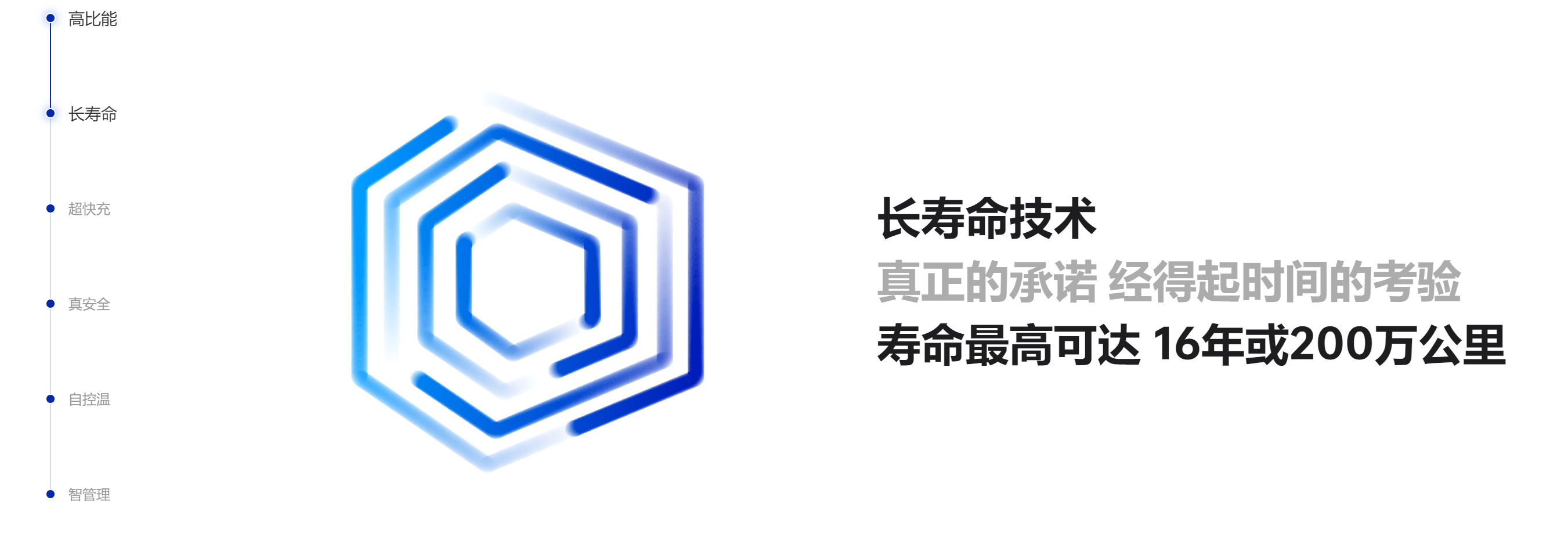
(Image source: CATL)
The Jinzhongzhao 2.0 system battery pack equipped in Deep Blue vehicles is claimed to have a cycle life of up to 3,000 cycles. Geely Automobile's self-developed Shendun Dagger Battery boasts a cycle life of up to 3,500 cycles and a battery life of up to 1 million kilometers. Similarly, if we calculate based on the average annual driving distance of 12,000 kilometers for private cars, after 20 years of use, the battery capacity degradation caused by charging cycles will not exceed 30%, while other vehicle components may not last 20 years.
On various platforms, consumers generally report that their or their friends' NEVs have been used for many years with minimal battery degradation. For example, a Zhihu user shared that their 2016 Dihao EV still has a battery health of 95% after driving 100,000 kilometers. A Weibo user mentioned riding in a taxi with a mileage of 440,000 kilometers, where the driver stated that battery degradation was less than 20%.
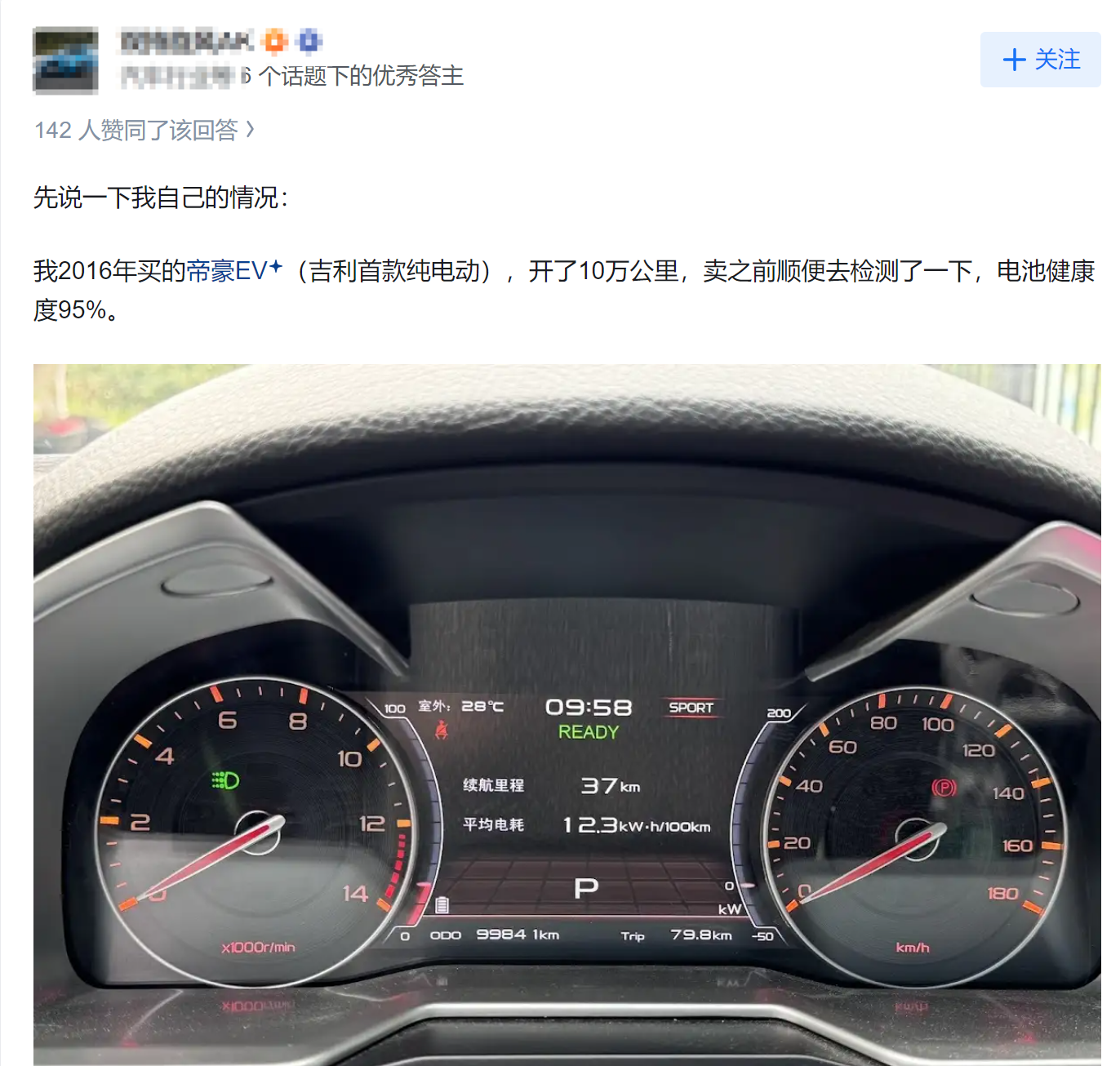
(Image source: Zhihu screenshot)
The annual driving distance of taxis is significantly higher than that of private cars. Nowadays, NEVs have become the mainstream choice for taxi drivers, especially in Guangzhou, where it is almost impossible to hail a conventional taxi. This demonstrates that the durability of NEV batteries has been recognized by taxi drivers.
To reassure consumers when purchasing NEVs, automakers also provide warranty services for the three electric systems (battery, motor, and electronic control unit). Some models from leading brands such as BYD, Chery, and Geely have joined the lifetime warranty program for these systems. For automakers or models that do not offer a lifetime warranty, they generally provide a warranty service with a duration of around 8 years and a mileage of around 150,000 kilometers. If the battery degrades severely within the warranty period, the automaker will replace the battery for free.
With technological advancements and service upgrades, battery degradation is no longer a significant concern for consumers. However, this does not mean that the veil has been lifted on the longer service life of fuel vehicles or that NEVs will completely replace them.
To replace fuel vehicles, NEVs still have a long way to go.
Now that battery degradation is no longer a concern for consumers, it sends a positive signal to the industry that used NEVs can be purchased with confidence. Data released by the China Automobile Dealers Association shows that the average three-year resale value of fuel vehicles is 52%, while that of pure electric vehicles is only 45%. The low resale value of used NEVs can be attributed to two main reasons: first, users worry that the three electric systems of used NEVs are unreliable and dare not buy them after the warranty expires (the warranty for the three electric systems is generally limited to the first owner); second, NEVs are upgraded and iterated too quickly, leading to concerns about obsolescence.
With the battery cycle life guaranteed and products having passed the rapid upgrade and iteration period, the used NEV market is developing rapidly. The transaction volume from January to April this year increased by 32.3% year-on-year. The notice issued by the General Office of the Ministry of Commerce to organize the 2025 New Energy Vehicle Consumption Season in Thousands of Counties and Towns also mentioned the goal of expanding the scale of used NEV transactions to facilitate users in trading in their old cars for new ones.
However, despite various policy supports, it will become increasingly difficult for NEVs to increase their market penetration. Data from the China Passenger Car Association (CPCA) shows that in July 2024, the penetration rate of NEVs in China exceeded 50% for the first time, but this trend failed to continue. Cui Dongshu, secretary-general of the CPCA, wrote in his public account that the production of NEVs from January to May this year was 5.64 million units, with a penetration rate of 44%.
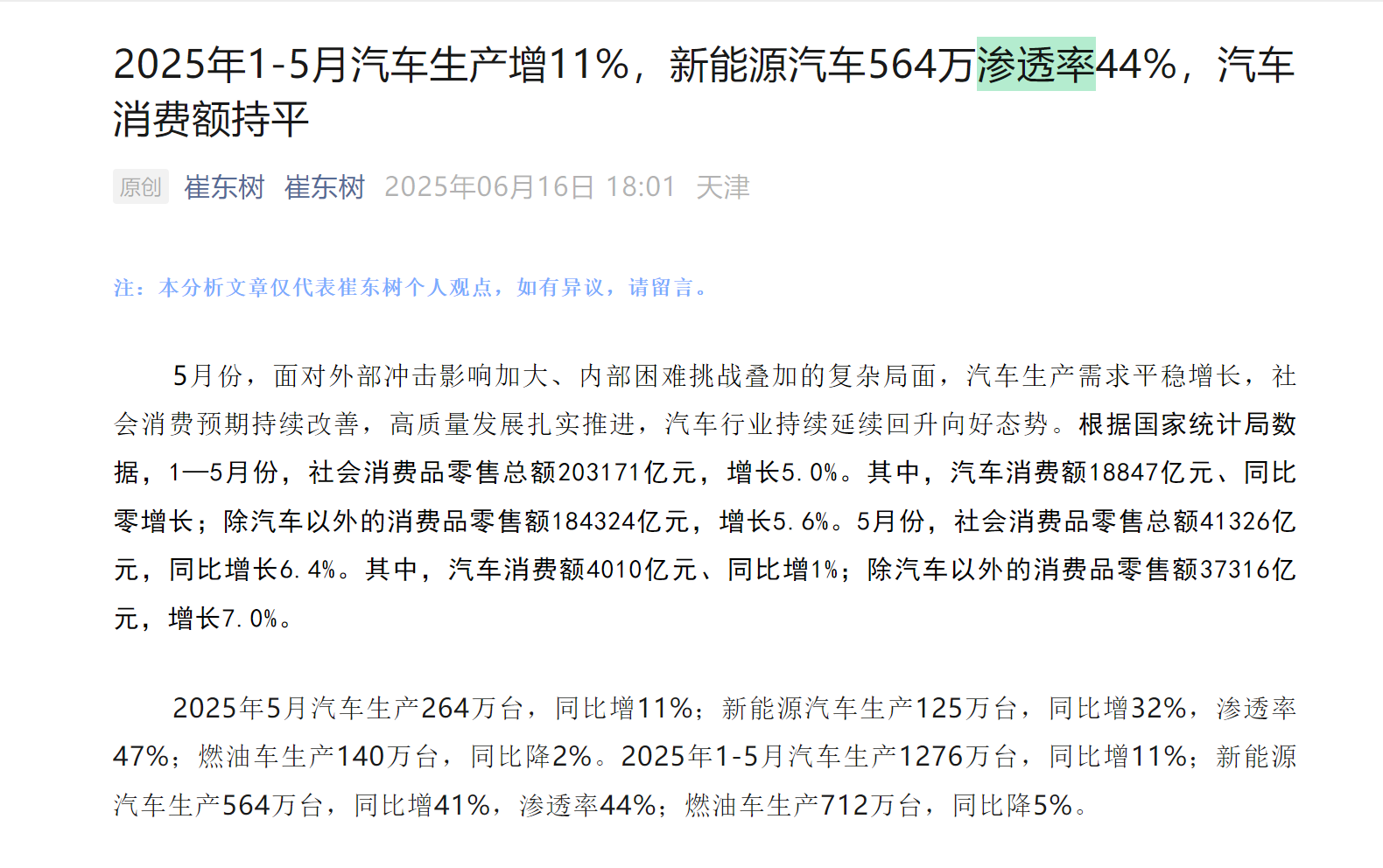
(Image source: Cui Dongshu's public account screenshot)
The reasons for this include range anxiety and purchase costs, which limit the rapid increase in the penetration rate of NEVs. Although battery companies and automakers can alleviate users' concerns about battery degradation, they cannot completely solve range anxiety. The range advertised by automakers is usually based on the CLTC driving cycle, which may differ from actual energy consumption and is easily affected by temperature. Even though the range of high-end pure electric vehicles can now reach over 600 kilometers, it still cannot completely eliminate users' range anxiety.
The high cost of batteries is reflected in the selling price. Nowadays, the starting prices of B-segment cars such as the Buick Regal, Ford Mondeo, and Hyundai Sonata have dropped to around 100,000 yuan, but there are not many NEV B-segment cars at this price point. Coupled with the change in the NEV purchase tax from exemption to a 50% reduction, the cost for consumers to purchase NEVs has further increased.
If we consider only driving experience, space, and other factors without intelligence, fuel vehicles currently offer better value for money compared to NEVs.
It is foreseeable that the overall penetration rate of NEVs will continue to show a year-on-year increase. The upcoming peak sales season for automobiles is expected to replicate the scenario from the second half of last year, where the penetration rate exceeded 50% for multiple consecutive months. However, NEVs and fuel vehicles will coexist for a long time, and there is still a long way to go before the penetration rate of NEVs exceeds 60%. Only by addressing range issues, penetrating lower-tier markets, and upgrading the user experience can NEVs accelerate their share of the fuel vehicle market.
Solid-state batteries are not the final nail in the coffin for fuel vehicles.
While battery life is no longer a significant concern for consumers, there is still no perfect solution to range anxiety. Currently, automakers and battery companies are optimistic about solid-state batteries. Solid-state batteries offer higher energy density, and companies such as CATL, BYD, Chery, and Mercedes-Benz are already developing and testing this type of battery.
At the 2024 Global Innovation Conference, Chery took the lead in launching a full solid-state battery with an energy density of up to 600Wh/kg, almost twice that of ternary lithium batteries, and a range of over 1,500 kilometers. Mass production is expected by 2026.
However, despite their potential to solve the range problem of pure electric vehicles, solid-state batteries cannot become the final nail in the coffin for fuel vehicles, mainly due to their high cost. Sun Huajun, a senior executive at BYD, once stated that solid-state batteries will not reach the same price as liquid batteries until 2030. Even if domestic automakers achieve the application of solid-state batteries in vehicles from 2026 to 2027, the cost of a 100kWh battery, which can reach 200,000 yuan, is considerable and can only be used in luxury cars.
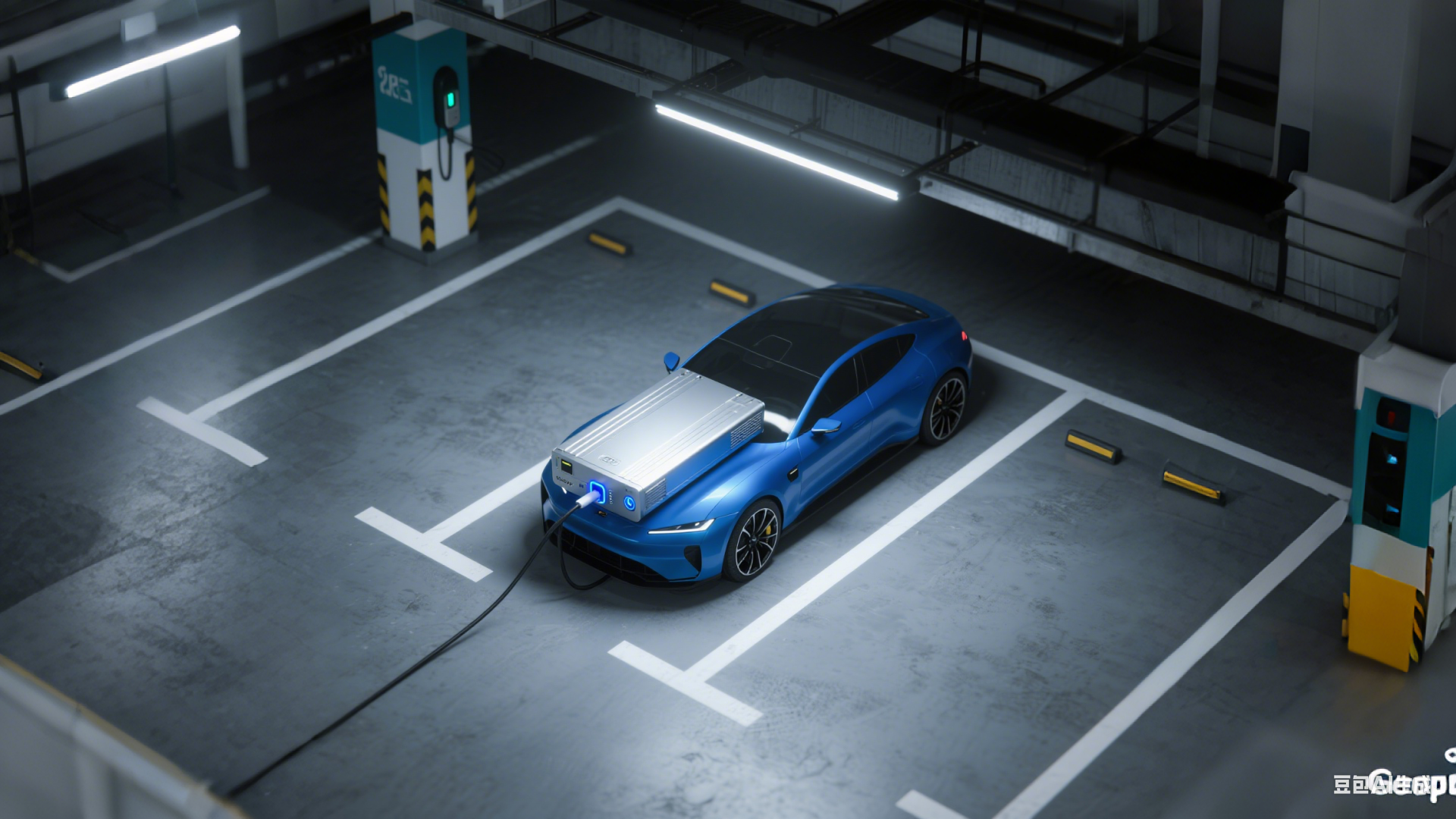
(Image source: Doubao AI generation)
Among batteries made of various materials, sodium-ion batteries are the cheapest, but their low energy density makes it difficult to achieve ultra-long range. It seems that long range and low cost cannot be achieved simultaneously in the short term.
The competition between fuel vehicles and NEVs will be long-term and arduous. The Geotab report has dispelled consumers' misconceptions about the sharp decline in battery life of NEVs, which will play a positive role in increasing the penetration rate of NEVs and allow more consumers to purchase them with confidence.
solid-state batteries, BYD, Chery, CATL, pure electric vehicles
Source: Lei Technology







